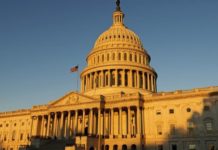
But change will be difficult, and the magnitude of what needs to be done is sobering. The U.S. currently spends 3.2% of gross domestic product on defense—roughly half of Cold War spending levels relative to GDP. An increase in spending of even 1% of GDP would amount to about $210 billion. That’s about 5% of the total federal spending level using a 2019 pre-Covid baseline. While Covid spending was large, it was transitory. Defense outlays would be much longer-lasting, an insurance premium or transaction cost for dealing with a more dangerous world.
The U.S. is not alone. Germany’s announcement of €100 billion in additional defense spending this year represents an increase of just over 0.25% of GDP, leaving Berlin still under the 2% commitment agreed to by North Atlantic Treaty Organization allies. Increasing Europe’s defense spending merely to the agreed-on level would require significant outlays. Such spending increases would occur against the backdrop of elevated public debt relative to GDP, brought on in part by heightened borrowing during the Covid pandemic and the earlier global financial crisis. High levels of public debt make it unlikely that countries will want to pay to increase their defense spending with new borrowing.
Paying for higher levels of defense spending will force most governments either to raise taxes or cut spending. Tax increases raise risks to growth. The larger non-U.S. NATO economies are already taxed to the hilt. Tax revenue relative to the size of the economy in France (45%), Germany (38%), Canada (34%) and the U.K. (32%) doesn’t leave much room to tax more without depressing economic activity. The U.S. has a lower tax share of GDP—about 17.5% at the federal level and 25.5% in total—but its patchwork quilt of income and payroll taxes makes tax increases more costly by distorting household and business decisions about consumption and investment.
A significant tax increase in the U.S. would need to be accompanied by fundamental tax reform, dialing back income taxes (as with the 2017 reduction in corporate tax rates) and increasing reliance on consumption taxes. A broad-based consumption tax could be implemented by imposing a tax at the business level on revenue minus purchases from other firms (a “subtraction method” value-added tax). Alternatively, the tax system could impose a broad-based wage and business cash-flow tax, with a progressive wage surtax on high earners. These consumption-tax alternatives would be efficient and equitable in a revenue-neutral tax reform. And they are crucial in avoiding decreases in savings, investment and entrepreneurship that accompany a tax increase.
Since the 1960s, spending on Social Security, Medicare and Medicaid has come to dominate the federal budget. Outlays for these programs have almost doubled since then as a share of GDP to 10.2% today, and the Congressional Budget Office projects they will consume about another 5% of GDP annually by 2040. Spending offsets to accommodate higher defense spending would surely require slowing the growth in social-insurance spending. As with tax increases, there are trade-offs. It is possible to slow the growth of this spending while preserving access to such support for lower-income Americans. Accomplishing that will require focusing net taxpayer subsidies on lower-income Americans, along with undertaking market-oriented health reforms. Such changes require serious attention.
The U.S. and its NATO allies will face a challenging set of economic trade-offs and political realities in achieving higher defense spending. The challenge will be exacerbated by additional private investment needs in a more dangerous world of investment risks, skepticism about globalization, and cybersecurity threats.
In the U.S., the failure of the 2010 Simpson-Bowles Commission’s proposed spending and tax reforms to spark a serious discussion is a warning sign. So, too, is the antipathy of Democratic and Republican officials alike toward creating the fiscal space necessary to accommodate greater defense spending. Such challenges don’t cause threats to vanish. They require leadership—now.
Mr. Hubbard is a professor of finance and economics at Columbia University. He served as chairman of the Council of Economic Advisers under President George W. Bush and is author of “The Wall and the Bridge: Fear and Opportunity in Disruption’s Wake.”






